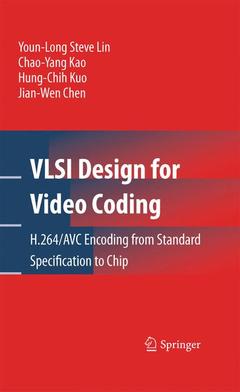Description
VLSI Design for Video Coding, 2010
H.264/AVC Encoding from Standard Specification to Chip
Authors: Lin Youn-Long Steve, Kao Chao-Yang, Kuo Hung-Chih, Chen Jian-Wen
Language: English
Subject for VLSI Design for Video Coding:
118.31 €
In Print (Delivery period: 15 days).
Add to cartPublication date: 09-2014
176 p. · 15.5x23.5 cm · Paperback
105.49 €
In Print (Delivery period: 15 days).
Add to cartPublication date: 02-2010
176 p. · 15.5x23.5 cm · Hardback
Description
/li>Contents
/li>Comment
/li>
High definition video requires substantial compression in order to be transmitted or stored economically. Advances in video coding standards from MPEG-1, MPEG-2, MPEG-4 to H.264/AVC have provided ever increasing coding efficiency, at the expense of great computational complexity which can only be delivered through massively parallel processing.
This book will present VLSI architectural design and chip implementation for high definition H.264/AVC video encoding, using a state-of-the-art video application, with complete VLSI prototype, via FPGA/ASIC. It will serve as an invaluable reference for anyone interested in VLSI design and high-level (EDA) synthesis for video.

